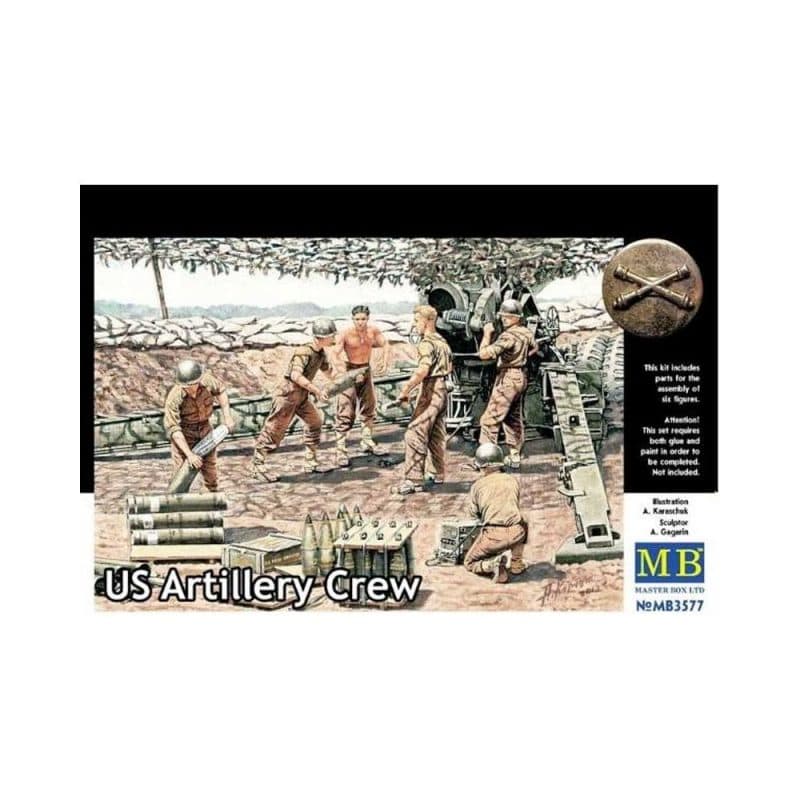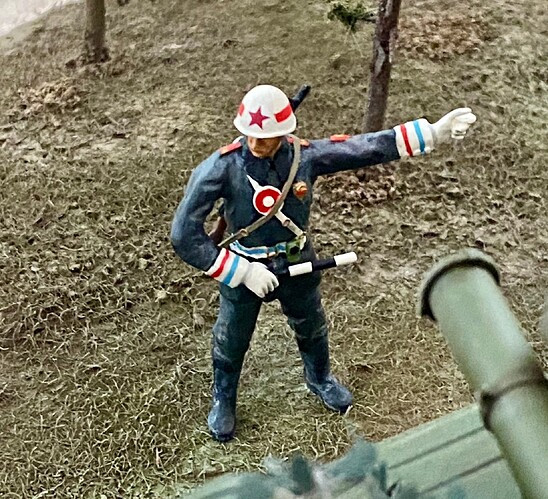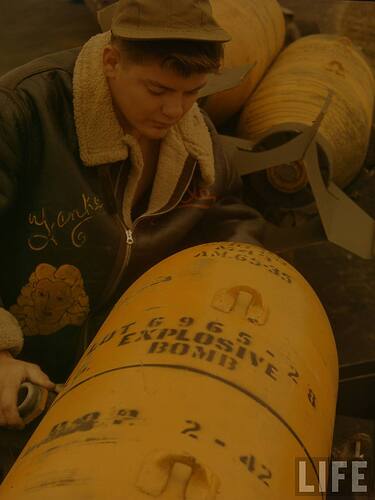I realize artillery is not as popular as armor, but I truly wish someone (are you listening AFV Club???) would make a set of World War 2 ammunition set of projectiles, fuses, powder charges and powder charge containers for the new 8-inch howitzer and for the new 155mm Long Tom gun. They make everything for the post war versions…
A proper gun crew in plastic would be nice too. ![]()
Yes, but the gun crews are larger for the 8-inch and Long Tom… For example, two men on the rammer staff and 2-4 on the shell carrier, but that crew would work well for a 155mm howitzer I think.
I believe from pictures I have seen, a full gun crew is 15-20 men for the two guns.
Hobby Fan makes them in resin as two sets.
Well then, buy as many sets as it takes and dig out the razor saw, lead foil, Hornet Heads and get converting!
No matter how hard I try, my figure conversion attempts are a cross between Frankenstein’s monster and a comic show … ![]()
![]()
![]()
![]()
![]()
![]()
![]()
Don’t worry - I’m not taking any expertise high-ground here; my figure mods are normally limited to the padding out of uniforms (a thickening up if you like), repositioning arms, new heads - sometimes - and that’s about it. Sculpting, say, on an armature is pretty much beyond me although I did manage a straight arm one, once:
That said, I did find that the more I did, including some Frankenstein-type results, the (slightly) better I became, so don’t give up(!)
@gunnerPhil,
The projectiles in AFV Club’s excellent AF35017 are the same as those used in WW2. The 8-inch used the same M106 projectile from WW2 until it’s retirement in about 1994. The markings on the projectile did change. The cold war projos added the D680 DODIC number stenciled in large yellow letters about the middle of the projo. Leave this decal off the projos and you are good to go. The powder charge is likewise. The M1 (green bag) and M2 (white bag) propellants are also unchanged. The stenciling on the prop can is different. Unfortunately, the pdf of my WW2 ammo TM 9-1901 and TM9-1900 are poor, and I can’t quite make out the markings.
The situation is the same for the 155mm projectiles and propellants. The M107 projo, M3 (green bag) and M4 (white bag) props are the same. The WW2 projo will lack the DODIC number stencil, and the prop can markings also appear to be different.
The fuzes used by the 8-inch and 155mm did undergo continuous improvement over the decades. Although the cold war fuze models are different, the changes are mostly internal. At 1:35 there are no discernable external differences.
I hope this helps.
Rick (former 8-inch battery commander)
Gun crew on the 8-inch was 14 men. The projo weighs 205 lbs. Normally, two guys would handle the projo tray. If you were moving projos between guns, 4 men would handle the tray. For ramming the 8-inch 2 or 3 guys would grab the rammer. Now punching the tube was another story – 8 to 10 guys heaving in unison on the cleaning staff. Somewhere buried in a big box of old-fashioned film photos I have one of my crews silhouetted against a great sunset punching the 8-inch tube.
The 155mm only weighs in at 98 lbs if memory serves me correctly, so still 2 guys on the tray; but 1 or 2 on the rammer.
Rick
Thanks for all the info… My experiences are limited to navy 5-inch/38cal, 5"/54mk45 mod 0-2, and 16"/50cal…a capstain was used to pull the bore brush through… Although if you pissed off the turret chief you might find yourself scrubbing the bore with scrub brush as you crawled through… Lol.
I’ve mentioned it in a few other posts, and your photo is an excellent example. Early war projos were yellow with black writing. I’d have to look up when again, but somewhere around 43-44 the colts changed. Not everyone gets it right in dioramas unfortunately.
Bombs were the same way. But obviously they had plenty of old stock to use up before the new colors became what was seen and the older ordnance was all gone…
This just popped into my feed 7 months later . . . There’s a couple of things that need to be corrected for future reference.
The handful of turned brass rounds 8-inch rounds in the set are OK but the 155mm . . .
The 155mm rounds have what looks to be a wide driving band (2 inches wide) which makes them gun rounds rather than howitzer rounds as the box claims. The markings claim that these are M107 rounds with supplemental charges. The M107 was a howitzer round with a narrow driving band (1.02 inches wide). These are closer to M101 rounds. The SUPPL CHG notation was very late war, if not postwar, added once they figured out how to make projectiles that would work with both deep insertion VT fuzes and shorter mechanical fuzes.
The rest of the set is postwar.
-
The grommets protecting the driving bands are formed fiber covers. During WW II separate loading projectiles primarily used rope grommets.
-
The lifting plugs have U-shaped rings similar to the postwar shock-attenuating designs rather than the circular rings that were used in WW II.
-
Ammunition pallets were introduced late in the war but they did not seem to get anywhere near the weapons. Pallets appear to be limited to stateside railroad shipments and for cargo hold loading in ships. The fact is, neither ammunition supply or artillery units had any way to handle the 800 to 1600 lbs loads banded projectiles represent and had to work with individual rounds.
-
The charge containers are the postwar type with the continuous rim on the container rather than the wartime container with three J-slots breaking through the rim. I would also check the container sizes. They are both marked as white bag charges but I’m not sure if they are the correct sizes for that type.
Even if you were to modify and mark these items as WW II ammunition, there was a significant amount of WW I ammunition used. In fact, the LIFE photo above showing a GI in Normandy eating on 155mm ammunition shows Mk IA1 HE rounds with fuze adapters and the very narrow (0.60 inch) driving band. (There were 75,000 these remaining stateside after V-J Day that were kept for training.) As the OP lamented, there is still a need for accurate WW II ammunition.
KL
Anyone have the full specs on these parts (dimensions, etc…)? Maybe I can make some up?


